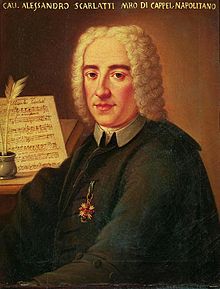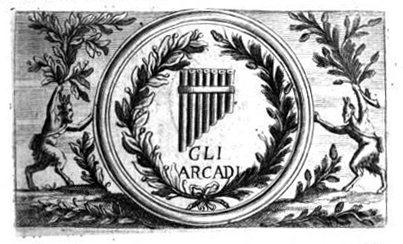This Week in Classical Music: November 14, 2022.Rome.On one of our recent walks in Rome, while coming down the Janiculum Hill (the Belvedere at the top offers a magnificent view of the city), we came across a sign on a gate, Accademia degli Arcadi.The gate was closed and led, it seemed, into the gardens.That was puzzling: could it be the Academy?Wasn’t it dissolved many years ago?We had to investigate, and the answers were surprising – but first let’s look back at what Accademia degli Arcadi was about and when.The beginnings of the Academy go back to the time of Queen Christina of Sweden’s sojourn to Rome.Christina, who abdicated the Swedish throne in 1654 but kept much of her riches, converted to Catholicism, settled in Rome in the Palazzo Farnese and surrounded herself with the most illustrious Roman intellectuals – poets, composers, philosophers.She became a patron to many of them.On January 24th of 1656 she opened an Academy, providing a space in the Palazzo Farnese, and called it Accademia degli Arcadi; it was a society devoted to cultural and intellectual affairs; its member met to discuss matters they deemed important, whether in poetry, music or arts.Much of it in those days was directed against the predominant Baroque style.
After Christina’s death in 1689 the Academy had to move several times and, in 1723, thanks to the generosity of King John V of Portugal, it settled in a newly built villa in a garden on the slope of the Janiculum, called Bosco Parrasio.The gate leading to the villa was what we saw on our walk down the hill.The Academy functioned as an important cultural institution for many years but with time it became less relevant, and, by the end of the 19th century, quite conservative.It still exists to this day, but instead of being a place where new ideas are generated and new arts promoted, it became a research institution, branching into such fields as history and archeology.It also moved, and Bosco Parrasio stays mostly empty, though some concerts are being played there occasionally.The Academy’s new headquarters are located not far from Piazza Navona, in the Biblioteca Angelica on Piazza di S. Agosino.
During the Academy’s early, and most vigorous, days, many prominent composers were its members, among them Alessandro Scarlatti, Arcangelo Corelli, Giovanni Bononcini, and brothers Alessandro and Benedetto Marcello.The famous opera librettist Pietro Metastasio also was a member. The young Handel, while he lived in Rome, attended its meetings.Let’s hear some of the music created by the Arcadians. Alessandro Scarlatti was famous for his operas, but he also wrote some church music.Here’s Credo, from his Messa di Santa Cecilia.Maurice Abravanel leads the Utah Symphony Orchestra and the University of Utah Chorus.Giuseppe Valentini, another Arcadian, was born in 1681; he is not as well-known as Scarlatti but his Concerto in A minor, op. 7, no. 11 is delightful.Here it is, in the performance by theMusica Antiqua Köln.
Accademia degli Arcadi, 2022
This Week in Classical Music: November 14, 2022. Rome. On one of our recent walks in Rome, while coming down the Janiculum Hill (the Belvedere at the top offers a magnificent view of the city), we came across a sign on a gate, Accademia degli Arcadi. The gate was closed and led, it seemed, into the gardens. That was puzzling: could it be the Academy? Wasn’t it dissolved many years ago? We had to investigate, and the answers were surprising – but first let’s look back at what Accademia degli Arcadi was about and when. The beginnings of the Academy go back to the time of Queen Christina of Sweden’s sojourn to Rome. Christina, who abdicated the Swedish throne in 1654 but kept much of her riches, converted to Catholicism, settled in Rome in the Palazzo Farnese and surrounded herself with the most illustrious Roman intellectuals – poets, composers, philosophers. She became a patron to many of them. On January 24th of 1656 she opened an Academy, providing a space in the Palazzo Farnese, and called it Accademia degli Arcadi; it was a society devoted to cultural and intellectual affairs; its member met to discuss matters they deemed important, whether in poetry, music or arts. Much of it in those days was directed against the predominant Baroque style.
of the city), we came across a sign on a gate, Accademia degli Arcadi. The gate was closed and led, it seemed, into the gardens. That was puzzling: could it be the Academy? Wasn’t it dissolved many years ago? We had to investigate, and the answers were surprising – but first let’s look back at what Accademia degli Arcadi was about and when. The beginnings of the Academy go back to the time of Queen Christina of Sweden’s sojourn to Rome. Christina, who abdicated the Swedish throne in 1654 but kept much of her riches, converted to Catholicism, settled in Rome in the Palazzo Farnese and surrounded herself with the most illustrious Roman intellectuals – poets, composers, philosophers. She became a patron to many of them. On January 24th of 1656 she opened an Academy, providing a space in the Palazzo Farnese, and called it Accademia degli Arcadi; it was a society devoted to cultural and intellectual affairs; its member met to discuss matters they deemed important, whether in poetry, music or arts. Much of it in those days was directed against the predominant Baroque style.
After Christina’s death in 1689 the Academy had to move several times and, in 1723, thanks to the generosity of King John V of Portugal, it settled in a newly built villa in a garden on the slope of the Janiculum, called Bosco Parrasio. The gate leading to the villa was what we saw on our walk down the hill. The Academy functioned as an important cultural institution for many years but with time it became less relevant, and, by the end of the 19th century, quite conservative. It still exists to this day, but instead of being a place where new ideas are generated and new arts promoted, it became a research institution, branching into such fields as history and archeology. It also moved, and Bosco Parrasio stays mostly empty, though some concerts are being played there occasionally. The Academy’s new headquarters are located not far from Piazza Navona, in the Biblioteca Angelica on Piazza di S. Agosino.
During the Academy’s early, and most vigorous, days, many prominent composers were its members, among them Alessandro Scarlatti, Arcangelo Corelli, Giovanni Bononcini, and brothers Alessandro and Benedetto Marcello. The famous opera librettist Pietro Metastasio also was a member. The young Handel, while he lived in Rome, attended its meetings. Let’s hear some of the music created by the Arcadians. Alessandro Scarlatti was famous for his operas, but he also wrote some church music. Here’s Credo, from his Messa di Santa Cecilia. Maurice Abravanel leads the Utah Symphony Orchestra and the University of Utah Chorus. Giuseppe Valentini, another Arcadian, was born in 1681; he is not as well-known as Scarlatti but his Concerto in A minor, op. 7, no. 11 is delightful. Here it is, in the performance by the Musica Antiqua Köln.